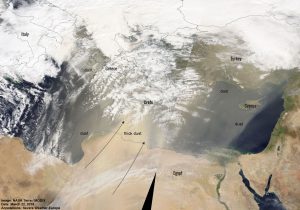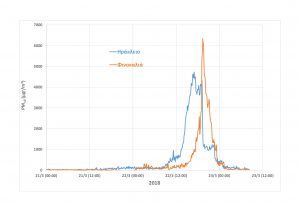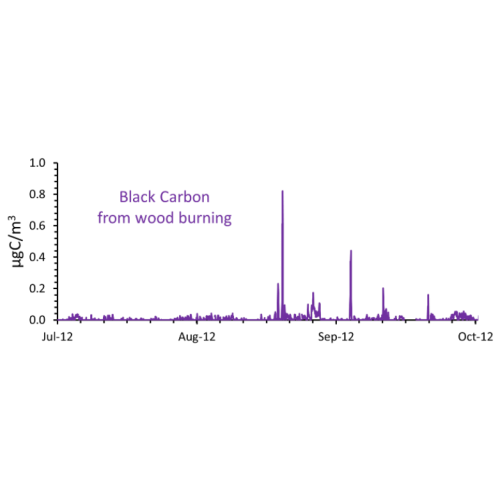Case study
Dust outbreak
Finokalia observatory located in the East Mediterranean at the cross-road of air masses from the European, Asian and African continents is sporadically affected by African intense dust outbreaks with extraordinary high levels of particulate matter (PM) also seen by satellites (left panel) that affect visibility, population at risk, the radiation balance of the atmosphere and, through atmospheric deposition, the ecosystems’ functioning. The strongest African dust outbreak event recorded during the last decade at Finokalia was observed on March 22, 2018, when PM10 levels as high as 6300 μg/m3 (5 minutes values) have been measured.
biomass burning
The station is also well located to observe air pollution from any large open fires mainly from continental Greece and Turkey that are occurring in the surrounding region during summer. The impact of the fires is seen in the measured Black Carbon levels. The impact of open fires in the area is also seen by satellites. The figure below shows the fire plume from the big fire in Chios that reached Crete on 18 August 2012 as seen by MODIS-Aqua satellite observations. The impact of this fire plume has been recorded at Finokalia on black carbon (BC) concentrations that exceeded 0.8 μg/m3.





